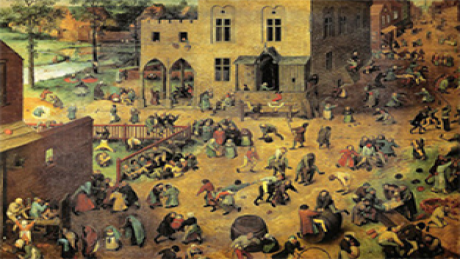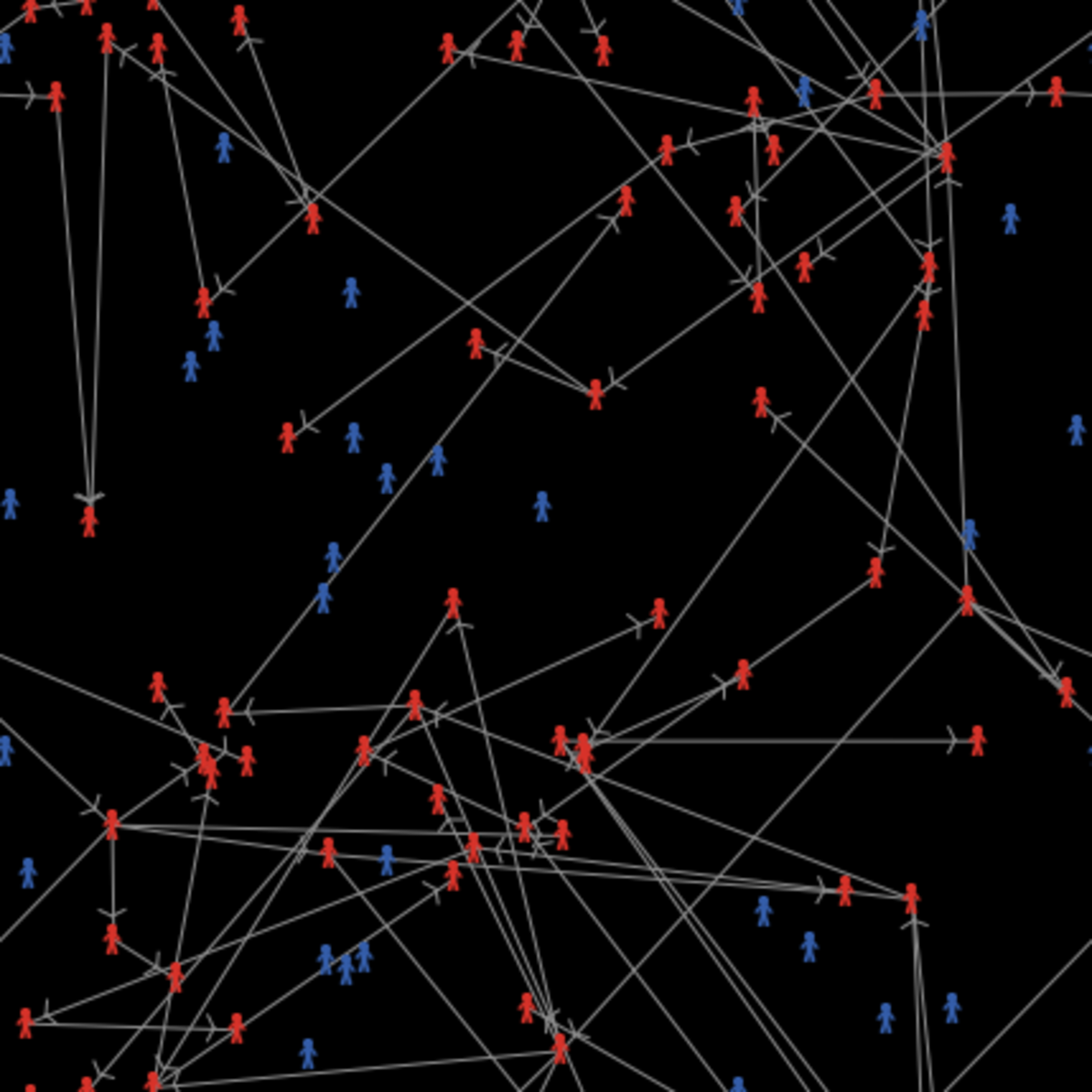Back to Courses









Social Sciences Courses - Page 32
Showing results 311-320 of 672
Game Theory II: Advanced Applications
Popularized by movies such as "A Beautiful Mind", game theory is the mathematical modeling of strategic interaction among rational (and irrational) agents. Over four weeks of lectures, this advanced course considers how to design interactions between agents in order to achieve good social outcomes. Three main topics are covered: social choice theory (i.e., collective decision making and voting systems), mechanism design, and auctions.
In the first week we consider the problem of aggregating different agents' preferences, discussing voting rules and the challenges faced in collective decision making. We present some of the most important theoretical results in the area: notably, Arrow's Theorem, which proves that there is no "perfect" voting system, and also the Gibbard-Satterthwaite and Muller-Satterthwaite Theorems. We move on to consider the problem of making collective decisions when agents are self interested and can strategically misreport their preferences. We explain "mechanism design" -- a broad framework for designing interactions between self-interested agents -- and give some key theoretical results. Our third week focuses on the problem of designing mechanisms to maximize aggregate happiness across agents, and presents the powerful family of Vickrey-Clarke-Groves mechanisms. The course wraps up with a fourth week that considers the problem of allocating scarce resources among self-interested agents, and that provides an introduction to auction theory.
You can find a full syllabus and description of the course here: http://web.stanford.edu/~jacksonm/GTOC-II-Syllabus.html
There is also a predecessor course to this one, for those who want to learn or remind themselves of the basic concepts of game theory: https://www.coursera.org/learn/game-theory-1
An intro video can be found here: http://web.stanford.edu/~jacksonm/Game-Theory-2-Intro.mp4

Basics of Inclusive Design for Online Education
This course provides instruction and strategies to support you in developing a course that is inclusive to students with a wide range of abilities, including students with disabilities. We cover effective practices to increase inclusion and avoid some of the common accessibility issues that can arise in an online course.
In particular, Basics of Inclusive Design Online covers course organization, the accessibility of Microsoft Office and PDF documents, making course instruction pages accessible, captioning of videos, making images accessible, and designing for learning differences. We also discuss how inclusive course materials can help all students, including students without disabilities.
This course will appeal to those who want both a broad overview of the range of accessibility considerations and also a step-by-step guide of how to check documents for accessibility, caption a video, or prepare course content for non-visual users.
Course logo credit: "web accessibility word cloud" by Jill Wright (https://goo.gl/xyUoeU).
Copyright - some rights remain. See https://creativecommons.org/licenses/by/2.0/

Engaging and Assessing Students with Plickers
By the end of this project, you will have created a Plickers account complete with Plickers assessments, fully equipping you to begin using Plickers with your students right away. Plickers is a free online tool that allows you to instantly check student understanding. Best of all - your students do not need their own devices in order to use Plickers. Plickers allows students to respond with QR codes as you scan the room to check for understanding! During this project, we will work together to set up your Plickers account and learn how to create assessments you can use with your class or at home. We will also learn how to use the data we collect from these assessments in order to inform and adjust our instruction.
*You will need a free Plickers account for this project.

Introduction to Agent-based Modeling with NetLogo
In this 2-hour long project-based course, you will create an agent-based model (ABM) that simulates the spread of a hypothetical virus through close contact between agents in a virtual world. By doing so, you will learn about the wonders of agent-based modeling as a paradigm, as well as the basics of NetLogo - one of the most famous and powerful simulation environments in this realm.
One of the beauties of ABM is that we can often observe emergent properties arising from the coded interactions between agents in the simulated world. Therefore, by experimenting with different interaction rules and parameters, we can gain an intuitive understanding of the underlying dynamics of varied complex phenomena. Such skills are extremely valuable for any decision making position, as well as for education, especially in a world where interconnectivity seems to be ubiquitous.
In this way, this model and project are highly attuned to the global pandemic that we’re facing due to the spread of the Coronavirus.
Note: This course works best for learners who are based in the North America region. We’re currently working on providing the same experience in other regions.

A Circular Economy of Metals: Towards a Sustainable Societal Metabolism
Metals are present everywhere around us and are one of the major materials upon which our economies are built. Economic development is deeply coupled with the use of metals. During the 20th century, the variety of metal applications in society grew rapidly. In addition to mass applications such as steel in buildings and aluminium in planes, more and more different metals are in use for innovative technologies such as the use of the speciality metal indium in LCD screens.
A lot of metals will be needed in the future. It will not be easy to provide them. In particular in emerging economies, but also in industrialised countries, the demand for metals is increasing rapidly. Mining and production activities expand, and with that also the environmental consequences of metal production.
In this course, we will explore those consequences and we will also explore options to move towards a more sustainable system of metals production and use. We will focus especially on the options to reach a circular economy for metals: keeping metals in use for a very long time, to avoid having to mine new ones.
This course is based on the reports of the Global Metals Flows Group of the International Resource Panel that is part of UN Environment. An important aspect that will come back each week, are the UN Sustainable Development Goals, the SDGs. Those are ambitious goals to measure our progress towards a more sustainable world. We will use the SDGs as a touching stone for the assessment of the metals challenge, as well as the solutions we present in this course to solve that challenge.

Performance Assessment in the Virtual Classroom
Welcome to Performance Assessment in the Virtual Classroom! This course will help you effectively assess student performance virtually, including compliance issues, feedback models, online grade book functions, and data analysis. We will discuss why effective measures of performance and assessment are a crucial component of any virtual program, and the importance of teachers and administrators understanding both the myths and challenges of assessing performance virtually, administering standardized testing with geographical challenges, and complying with state and local requirements to make sure students are meeting requirements.
Through the successful completion of this course, you will be able to:
• Examine the importance of authentic performance and assessment in the virtual classroom.
• Discuss academic integrity and remote assessments in the virtual classroom.
• Apply best practices for data analysis and grade book management.
• Consider performance and assessment for special populations: gifted, at-risk, and special needs students.
• Discuss the importance of instructional feedback and monitoring progress and performance using technology.

Serious Gaming
Have you ever wondered how playing games can help us to train people, deal with societal challenges or raise awareness of contemporary social issues?
In this MOOC you will learn the ins and outs of games that are designed with exactly those purposes in mind: serious games. We will define serious games and discuss the different types that have been developed. We will explain why people like to play them and what impact they may have. State of the art theories from game studies, philosophy and media psychology will be used to help you understand how serious games work and how they appeal to players. The potential impact of gaming is addressed in detail by discussing persuasive games, which aim at changing the player's attitude. Throughout the MOOC, theoretical insights will be illustrated with playful animations and case studies of serious games that are developed by world-class companies in the city of Rotterdam.
This MOOC is particularly interesting for you when you are a student considering to study digital media such as serious games, a professional interested in the opportunities these games may create for your organization, or a game developer who wants to know more about the impact serious games can have. Note that this MOOC will not teach you how to design a serious game.
Watch the teaser for this MOOC here: https://www.youtube.com/watch?v=FqjY1KSsEx8
Are you ready to broaden your vision on serious games? Join this course and be inspired!

Property and Liability: An Introduction to Law and Economics
Think about the oldest and most familiar principles of American law, property and proportional liability, in a new and surprising way, and learn to apply economic reasoning to an especially important and interesting aspect of life.

International Business I
We live in a world of intensifying global relationships, one in which international business has become the key determinant of economic development and prosperity. This course, Global Business Environment, Part I, introduces students to a fundamental understanding of the socioeconomic political, cultural, and linguistic environment in which international businesses operate. This course utilizes an inquiry-based approach to understanding country level relationships in the Global Business Environment. It surveys the global business environment by asking and answering key questions about society, the global economy, cultures, institutions and languages. The questions we will ask are: 1. What is Globalization?, 2. Is Globalization New?, 3. How do Political and Social Institutions impact National Economic Development?, 4. What is the role of Culture?, 5. What are the Gains from Trade?6. Free Trade, Free-r Trade or Managed Trade?, 7. What are Foreign Currencies and how are Exchange Rates Determined?, 8. What does the Current Global Business Environment look like? This inquiry-based approach creates reflective opportunities for students to better understand the environment in which businesses operate. Lectures are delivered in an engaging manner, which encourages reflection and inquiry.

Use Microsoft PowerPoint to Create a Visual Schedule
By the end of this project, you will have created a visual schedule that you can use with your class to provide structure for their day. Visual schedules can relieve any anxiety students may have about what comes next and provide an opportunity to discuss any changes to the day. This will help your students feel more calm and ready to learn. Visual schedules are also essential tools for students with Autism Spectrum Disorder or learning needs. By using a visual schedule, you can differentiate their learning goals for the day in a way that allows them to feel prepared for each new task and ready to move on when each task is complete.
